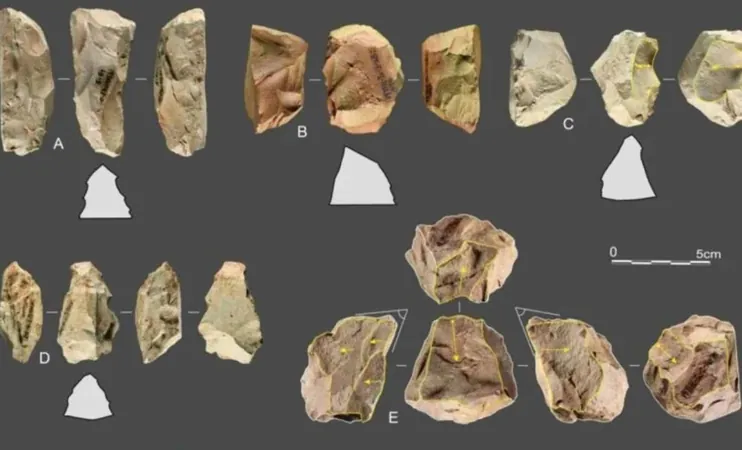
50,000-Year-Old Quina Tools Unearthed in China: A Game-Changer for Human Evolution?
2025-04-02
Author: Ken Lee
In a stunning revelation, a recent study published in the Proceedings of the National Academy of Sciences has unveiled the discovery of ancient tools dating back 50,000 years at the Longtan archaeological site in southwest China. These artifacts, associated with the Quina technological system, were previously regarded as predominantly European, prompting researchers to reconsider the complexities of human migration and innovation during the Middle Paleolithic era.
Revolutionizing Our Understanding of Prehistoric East Asia
This groundbreaking find is shifting the narrative surrounding the Middle Paleolithic period in East Asia, a time once viewed as relatively stagnant in contrast to the dynamic cultural advancements happening in Europe and Africa. Researchers are now confronted with the possibility that this era in East Asia was far more vibrant and progressive than previously understood.
Ben Marwick, an archaeology professor at the University of Washington and a co-author of the study, expressed the significance of this discovery, stating, “This challenges our previous assumptions about this region's history. It prompts us to ask what other innovations may have occurred that we have yet to uncover, and how these findings will impact our understanding of human evolution in this area.”
The Broader Implications: Migration and Cultural Exchange
The Quina tools discovered in China bear resemblance to those from Europe during the same time frame, raising intriguing questions about potential human migration or cultural exchanges between these distant regions. Characterized by their distinctive asymmetrical scrapers, these tools likely played vital roles in tasks such as material scraping and shaping of various substances, including bone and wood.
Marwick further noted, “We need to explore whether these tools evolved locally from prior experimentation or if they were introduced as part of a broader exchange between groups. This could indicate a dynamic interaction between ancient communities that challenges the notion of cultural isolation.”
A Prelude to New Queries in Archaeology
For decades, scholars have largely assumed that East Asia was isolated and unchanged throughout the Middle Paleolithic. This assumption has now come under scrutiny. As Marwick indicated, “The long-held belief that nothing substantial has altered during this era in East Asia has limited our exploration of the past. With these findings, there’s a renewed interest among researchers to reevaluate existing theories about early human activity in the region.”
Looking Ahead: The Search for Human Remains
As researchers delve deeper into the implications of this discovery, the focus is also turning to the search for human remains associated with the Quina tools. These findings could provide critical insights into the individuals who created and used these tools, potentially unlocking new chapters in the story of human evolution and migration.
This extraordinary discovery at Longtan beckons us to reconsider the layers of human history that predate our understanding, illuminating a period that could be as pivotal as those studied in Europe. Will this be the key to unlocking the mysteries of our ancestors, or will it lead to more questions than answers? Stay tuned as this archaeological journey unfolds!



 Brasil (PT)
Brasil (PT)
 Canada (EN)
Canada (EN)
 Chile (ES)
Chile (ES)
 Česko (CS)
Česko (CS)
 대한민국 (KO)
대한민국 (KO)
 España (ES)
España (ES)
 France (FR)
France (FR)
 Hong Kong (EN)
Hong Kong (EN)
 Italia (IT)
Italia (IT)
 日本 (JA)
日本 (JA)
 Magyarország (HU)
Magyarország (HU)
 Norge (NO)
Norge (NO)
 Polska (PL)
Polska (PL)
 Schweiz (DE)
Schweiz (DE)
 Singapore (EN)
Singapore (EN)
 Sverige (SV)
Sverige (SV)
 Suomi (FI)
Suomi (FI)
 Türkiye (TR)
Türkiye (TR)
 الإمارات العربية المتحدة (AR)
الإمارات العربية المتحدة (AR)